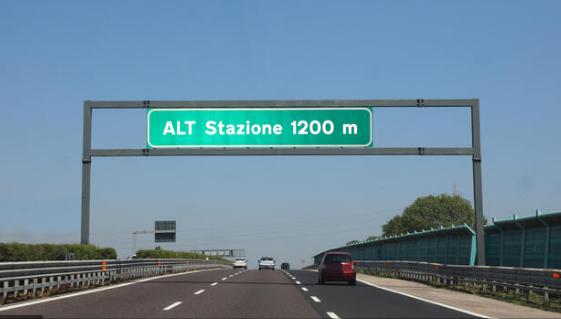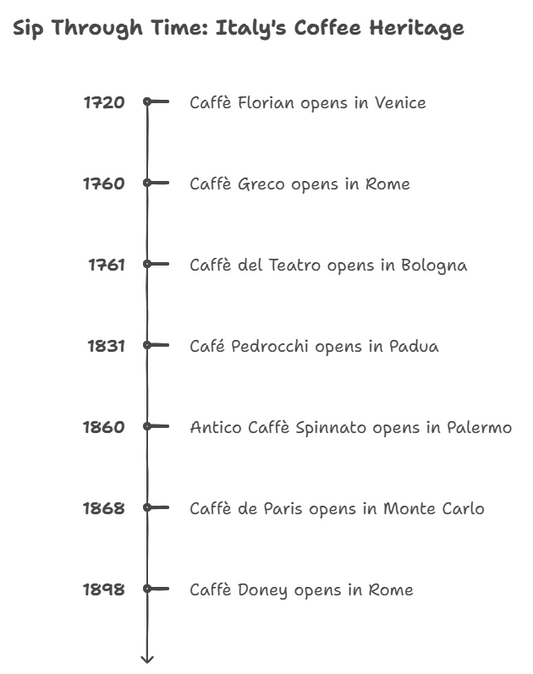Millions of visitors come pouring into Italy across the globe, making it the 5th most visited country in the world as of 2022. Thanks to the impressive network of various transport systems, visitors can relive histories, bask in areas of nature, and feast on gastronomic delights from one city to another.
- Railways / Trains
Italy is known for its extensive rail system that takes visitors to most destinations. Most tourists prefer to get around Italy by train as it is deemed the most efficient yet reasonably priced mode of transport.
1.1 High-speed railways
One major aspect of Italy’s rail system is the high-speed rail routes that link many of Italy’s major cities, from Naples through northern cities such as Milan and Turin. Mainly operated by Trenitalia, trains are color-coded according to how fast they travel. You can also tell whether a train is high-speed by identifying a ‘Freccia’ in its name.

The Frecciarossa ("Red arrow") train has a maximum speed of 300 km/h on high-speed tracks (Credits: Europe by Rail)

(Credits: Trainline)

Besides the publicly operated trains, NTV (Italo) has run high-speed services since 2012, making Italy the only European country to have a private high-speed train operator.

1.2 Regular trains
If you are planning to travel not too far, such as within a city or to a nearby town, consider regular trains for which you can purchase a rail pass or ticket online or at train stations. They operate slower than high-speed trains but your wallet will thank you for saving quite a bit. Besides shorter distances, regular trains are travelling to several neighboring countries such as France and Switzerland. Talk about a convenient Europe trip!
The first type of regular train would be intercity trains linking Italy’s major and minor cities outside the high-speed network. Although they usually run only once or twice daily, there are around 86 of them reaching more than 200 destinations a day. They connect more destinations than high-speed trains. Visitors can better access cities and towns that surround primary and secondary destinations, such as Venice and Verona respectively. In addition to daytime services, there are nighttime services with sleeper compartments and washrooms for a comfortable journey.

The second type of regular train would be the regional train. Since high-speed trains do not serve all cities, regional trains help to cover this gap. However, they can indeed be slow, given that they are older and tend to make a stop at all stations between every 2 larger cities. Fortunately, the Veloce is a faster regional train that makes fewer stops in between destinations. This is perhaps the most affordable train in Italy but you might need to bear the heat a little during summer in trains without air-conditioners. Common names for these trains include Interregionale (IR), Diretto (D) and Espresso (E).

- Buses
If you plan on exploring mostly big cities or the northern half of Italy in general, trains are the way to go. However, if your itinerary includes towns in the countryside, nestled between major metropolitan centers, buses might be the more convenient transport, especially since some of such rural areas lack train service. Additionally, buses are cost-effective but slower than trains, particularly during high traffic on narrow streets of city centers.
You can purchase bus tickets online or at designated areas, from bars and tobacconists to newsstands and ticket machine stations. You will be pleased to find out that most cities offer 24-hour tickets for tourists.
One unique thing about Italy’s bus system though; no national bus network is linking Italy’s 20 regions for you to book a journey via one system. Thankfully, third-party bus companies such as Flixbus, and airport shuttle buses address this.

2.1 City buses
Operated by city-based companies, such as TPER in Bologna and ATB in Bergamo, you can travel within Italian cities with these buses. Do take note that the price of the ticket tends to be higher if the bus you are on travels through more bus zones.

2.2 Regional buses
Within each of Italy’s 20 regions lies a province that cannot be accessed as easily by trains. Imagine perambulating less crowded areas and discovering other hidden gems along the way! Thus, regional buses make up the bulk of Italy’s buses, and some examples of them include Busitalia and Arriva Italia.

- Trams
Appearing like longer versions of cable cars, trams are one of the least common modes of transport in Italy today. But did you know that back in the 19th Century to early 20th Century, hundreds of these mini trains were running in hundreds of Italian cities daily? Nowadays, there are much fewer trams in the world, so it might be a challenge for you to even spot one in Italy!
You will need to visit certain cities, particularly Rome and Milan where lucky visitors get to experience using trams to navigate within a city.

- Ferries
Fancy some island views for your Instagram page? Italy’s ferries have it covered, ferrying you to islands off the coasts of the country. Italian ports embrace tourists every year, and most ferry companies operate all year round. If you want to visit Sicily or Sardinia, hop on the Navi which are larger ferries. If you are leaning towards visiting smaller islands such as Pianosa, you have the traghetti which are smaller ferries.


Just like trains, there are ferries leading to other countries such as Greece and Spain. This also means that you can pass by various attractions in the Mediterranean Sea, thanks to ferry companies such as the European Seaways and Ventouris Ferries.

- Taxis
Metered taxis are available throughout the day in Italy for tourists who want to arrive at a nearby place quickly. Although most Italian cab drivers have been praised for their warm, professional nature, there is the occasional tale of tourists getting scammed. This has prompted Rome authorities to clamp down even harder on taxi drivers who rip off tourists at the city’s airports.
Here are some safety measures you can take.
- Do not follow taxi drivers who approach you as they could be fishing for victims.
- Ensure that the meter is running. Claims that it is faulty or broken are often a ploy to overcharge tourists. It is wise to step out if the driver refuses to turn on the meter, but if you know the city extremely well, you can consider negotiating a flat rate as you would know if the driver is trying to overcharge you.
- Catch a taxi at the official taxi ranks. This way, you are assured that the taxi is registered and a lot less likely to flout rules. You can also order such a taxi via phone from a well-known company.

In terms of fare costs, some extra charges are valid so do look up such charges in the city you are visiting. In Rome for example, a taxi fare within the city begins at € 2.80 from 7 am to 10 pm but on Sundays, it is € 4 during the day and at € 5.80 during the night. Furthermore, you might feel the driver is purposely taking a less direct route to charge you more but keep in mind of Italy’s numerous winding roads. In short, don’t be overly paranoid about being tricked, as long as you follow safety measures like the abovementioned ones!
Larger Italian cities such as Rome, Naples, and Turin often use the taxi app FreeNow. Akin to other ride-sharing apps such as Uber and MyTaxi, you can add your pick-up and drop-off locations, and monitor the driver’s path taken. The app also allows you to pay the driver directly if you lack cash. Speaking of ride-sharing, you can foster new friendships with other tourists while reducing your carbon footprint for the environment.
- Driving
It might be tempting to wheel yourself and your loved ones around Italy. Controlling how fast you go, when and where to stop without worrying about other tourists’ plans. Despite the liberty, you might find the Italian driving culture of mostly motorcyclists and Vespa motorists rather aggressive, given the often packed roads.
On toll roads, you would pass through a toll booth (an Alt-Stazione) where you collect a toll charge ticket to be paid for at the next toll booth. You can use cash, credit card, or prepaid cards to pay through Telepass, an electronic tolling system for drivers to pass through without stopping.

In the event of a crisis such as a breakdown, call 116 from one of the emergency telephones that are located every 2 km along the highway. There is no need to be a member of the Automobile Club d’Italia (ACI), Italy’s breakdown service.
- Cycling
If you ask me, this is the best way to experience Italy’s cooling breezes as you take your time admiring elaborate structures and geographical splendors. Like other European countries, Italy is highly bike-friendly, explaining why most of its cities have well-developed cycling networks such as dedicated cycling lanes. Bike-sharing schemes are also popular in larger cities, such as ToBike in Turin.





